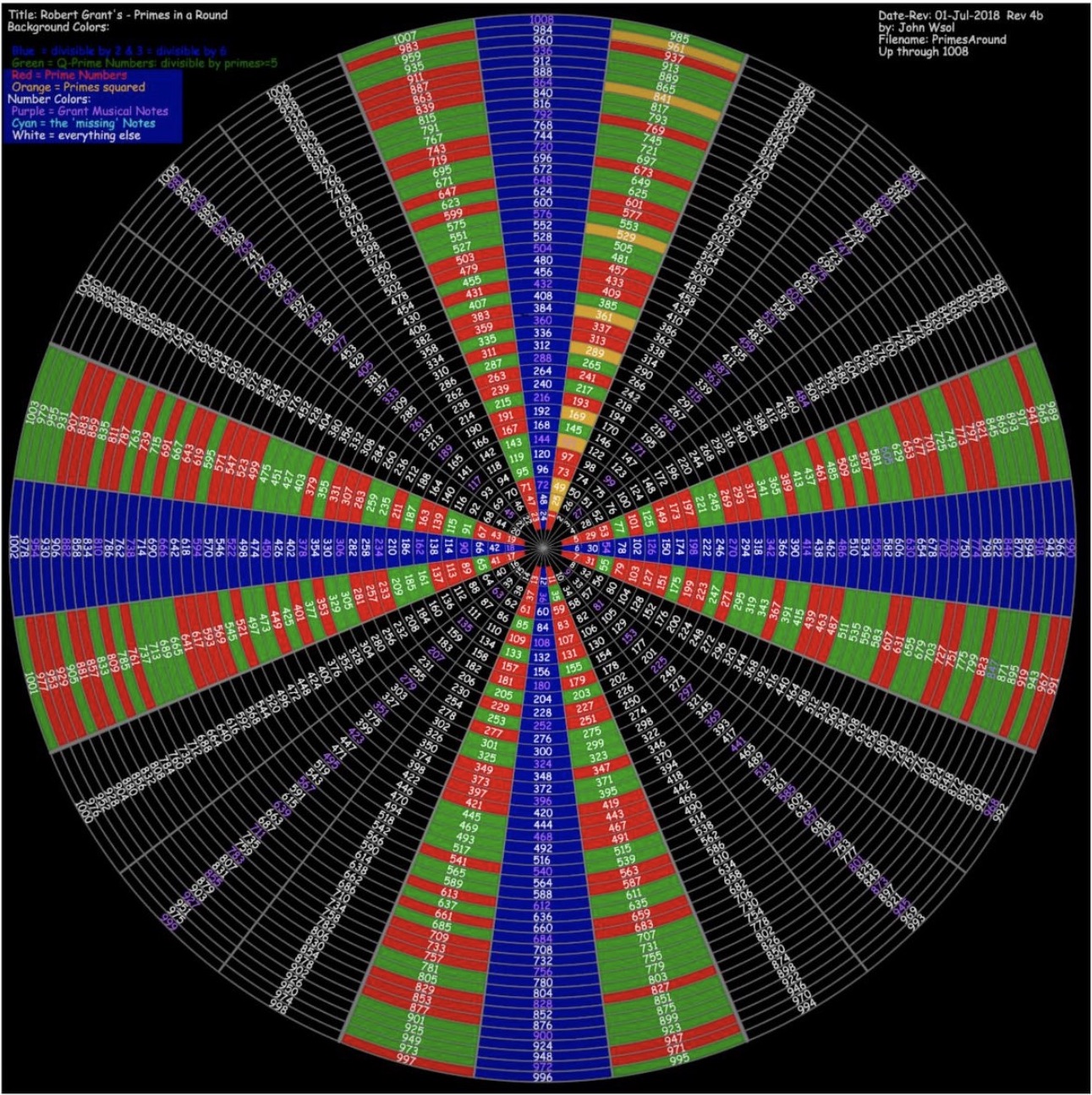The Numbers PART TWO
March, 2024

Previously on The Numbers...
In Part One we touched on Number Sequences, supposedly inspired by a plot device on the TV Show "Lost." Those numbers turned out not to be a "number sequence" as they have neither a math-based generating rule nor extensibility to infinity.
We did introduce simple sequence rules like "Add 5", which also provided a logical way to test if a number would occur in the future of the sequence ("Divide by 5 with no remainder"). We discovered the Fibonacci Sequence, which generates each next number by adding the two previous numbers. Notably, the test for a stand-alone Fibonacci number requires a non-intuitive, but formulaic approach.
Prime Numbers
The last sequence type was the Prime Numbers. They have a seemingly simple production rule: The next larger Prime Number must be a positive integer, evenly divisible only by 1 and itself. With small numbers the test is easy: 3 is not divisible, but 4 = 2*2. So 3 is Prime and 4 is not. Simple. The challenge of detecting Prime Numbers becomes more apparent as the numbers get larger. Detection supposedly becomes impossible.
Distribution Paradox
As the list of prime numbers gets larger, they appear more distantly spaced:
- For numbers 1-10: 40% are prime
- For numbers 1-100: 25% are prime
- For numbers 100-1,000: 15% are prime
- For numbers 1,000-100,000: 10% are prime
- For numbers 900,000-1,000,000: 7% are prime
- For numbers around 1,000,000,000 about 4% are prime
The prime numbers are not evenly spaced, however, like when two primes occur as "twins." Twin examples are 11-13, or 1931-1933, or even 997121-997123. The prime numbers have been mathematically proven to extend infinitely, and there appears no maximum value for "twins."
Random Distribution
In my education, I was taught that Prime Numbers were the mathematical example of non-predictability. If you ascribe to the notion that Mathematics is the "Queen of the Sciences", representing the ultimate nature of the Universe, then this becomes important. A fully deterministic Universe creates issues with "Free Will," but a solid counter-example unsettles this. If numbers can be non-deterministic then so can many other things.
Because the greatest minds have yet to fully grasp the behavior of the Prime Number Series, it is frequently considered to progress through a "Random Nature." Suggesting a pattern or solution has been found, depriving the series of randomness, is a radical suggestion. For some, it could feel like heresy.

Heckled by Hackers
In 2019 "ArsTechnica" published "Alleged 'snake oil' crypto company sues over boos at Black Hat"
Essentially, a sponsor of the 2019 Black Hat Conference presented a keynote speech, based on their published paper, "Accurate and Infinite Prime Prediction from Novel Quasi-Prime Analytical Methodology." The presentation was derailed by heckling and booing.
Crown Sterling CEO, Robert E. Grant, later issued a statement about the controversy, “Crown Sterling has announced a legitimate multi-dimensional encryption technology that challenges the paradigm of today’s encryption framework. We understand that the discovery completely transforms the way we secure data and that some members of the security industry are resistant to change or accepting of new technologies that do not conform to traditional approaches.”
Digital Security in a Nutshell
Digital Encryption requires a KEY. A message that you send or receive is "encrypted" so no one without the key can understand it. The key is a number, and the encryption is some math done to the original message, using the key as critical input. If you reverse the math (ie decrypt the message) without knowing the original key, you will get gibberish.
The current "encryption framework" referenced by Robert Grant is RSA Public-Private Key Encryption. The Public Key is the product of 2 large prime numbers, and the security of the system depends on two simple math principles:"
- It is very EASY to calculate the Product of two Prime Numbers (i.e. multiply them).
- Given that Product, it is exceptionally DIFFICULT to determine the Prime Numbers used.
Let's see a quick example of the above, but in reverse order:
- What two prime numbers when multiplied together equal 3,732,623?
- (Hint 1. There are only two numbers that answer this...)
- (Hint 2. If you have one prime number and it divides the above evenly, then you know BOTH prime numbers!)
- (Hint 3. Good luck. Even after you recognize them all, there are 265,588 different prime numbers that could be part of the answer.)
- (Hint 4. Try dividing by 1931. In this case, it directly provides the solution and illustrates the point.)
Extraordinary Claims Require...Numerology?
The Grant paper makes its position clear, "encryption and decryption methods ... rest mainly on prime numbers being unique factors of numbers and on their perceived randomness." Grant asserts the true order of the prime numbers can be determined by "the icositetragon (24-sided regular polygon), a unique polygon pertaining to prime numbers and their ultimate incidence and distribution."
The ArsTechnica article says the paper focuses on "a type of calculation that has been used in occult numerology."
Challenge randomness and heckling ensues.
Charlatan or Shaman
I am always interested when people claim to discover patterns where the common wisdom declares "random!" If Crown Sterling were looking for a gullible audience to sell digital "snake oil," paying $25K to present at a Black Hat conference seemed a worst-case scenario. A Theranos Investors reunion would better fit the mark. Perhaps Robert Grant was just nuts? However, LinkedIn shows previous executive positions for him at Allergan Medical and Bausch & Lomb Surgical. So perhaps a serious guy after all. I became determined to dig much deeper.
The Grant Wheel
This diagram appears in the appendix of the Grant paper. It gives a starting point for evaluating the 24-sided "occult" approach to Prime Number Generation.
